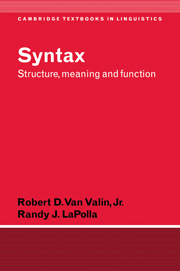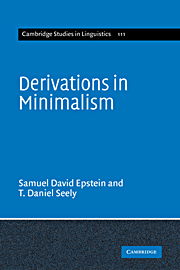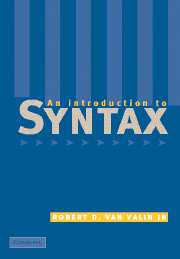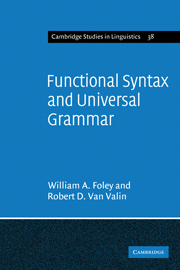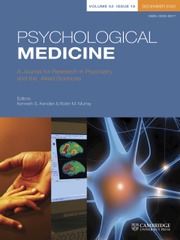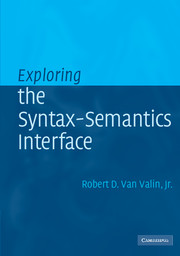Syntax
This book is an introduction to syntactic theory and analysis which can be used for both introductory and advanced courses in theoretical syntax. Offering an alternative to the standard generative view of the subject, it deals with the major issues in syntax with which all theories are concerned. It presents syntactic phenomena from a wide range of languages and introduces students to the major typological issues that syntactic theories must address. A generous number of exercises is included, which provide practice with the concepts introduced in the text and in addition expose the student to in-depth analysis of data from many languages. Each chapter contains suggestions for further reading which encompass work from many theoretical perspectives. A separate teaching guide is available.
- Non-Chomskyan (non-generative) introduction to syntax
- Designed to be usable on both introductory and advanced courses, containing exercises and lists of suggested reading
- Cross-linguistic approach, presenting data from languages from all over the world
Reviews & endorsements
'A seminal contribution to syntactic theory … will serve as an essential reference for those interested in RRG and other functionally-oriented frameworks and an excellent textbook for more advanced courses in syntax or typology'. Language
Product details
December 1997Paperback
9780521499156
744 pages
229 × 153 × 45 mm
1.162kg
56 exercises
Available
Table of Contents
- 1. The goals of linguistic theory
- 2. Syntactic structure I: simple clauses and noun phrases
- 3. Semantic representation I: verbs and arguments
- 4. Semantic representation II: macroroles, the lexicon and noun phrases
- 5. Information structure
- 6. Grammatical relations
- 7. Linking syntax and semantics in simple sentences
- 8. Syntactic structure II: complex sentences and noun phrases
- 9. Linking syntax and semantics in complex sentences
- Epilogue: the goals of linguistic theory revisited
- Notes
- References.

